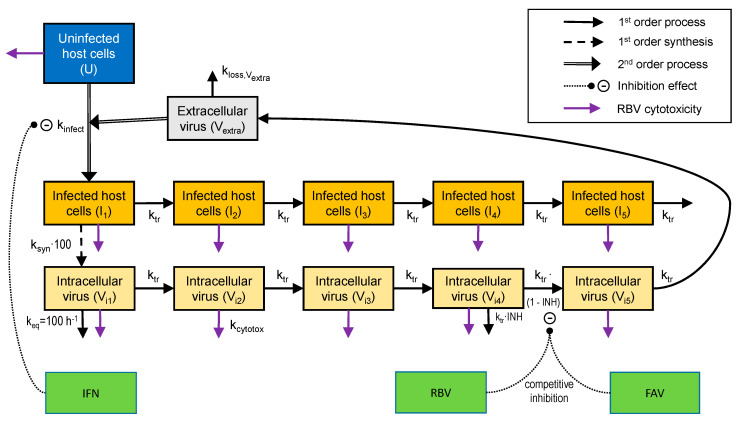Figure 3.
Structural model describing extracellular CHIKV infecting host cells, the production of intracellular virus by infected cells, as well as the inhibitory effects of FAV, IFN and RBV. The binding of extracellular virus to uninfected host cells was not affected by IFN. However, IFN inhibited the subsequent transformation from uninfected to infected host cells. Both infected host cells and intracellular virus were described by a series of five transit compartments each. In this model, virus was synthesized by the first infected host cell compartment. To achieve a rapid equilibrium between host cells in stage 1 and intracellular virus in stage 1, the first-order virus synthesis rate constant was multiplied by 100 and an equilibration rate constant (keq = 100 h−1) was incorporated for Vi1. Both FAV and RBV inhibited the transition of intracellular virus between the fourth and the fifth intracellular virus compartment via a competitive mechanism. In addition, the cytotoxicity effect of RBV was incorporated in to the model and affected both uninfected and infected host cells, and indirectly also immature intracellular virus as described in the methods. In HFF-1 cells, FAV displayed poor intracellular permeability and did not contribute any inhibitory effect. However, FAV permeability was considerably better in the other cell lines.

